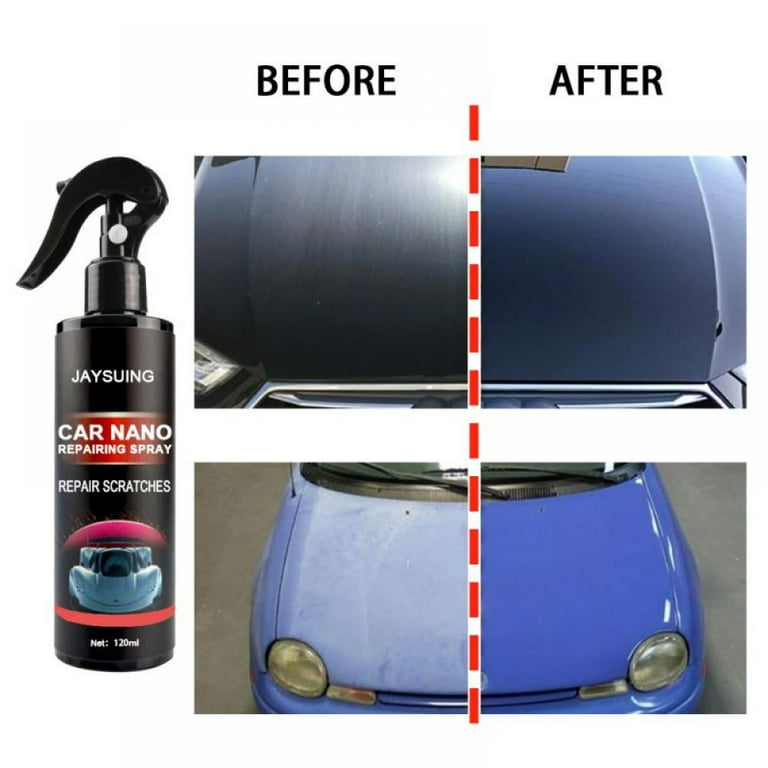The Ultimate Overview to Understanding Vehicle Ceramic Covering and Its Advantages
Automobile ceramic finishing has arised as an essential innovation in auto treatment, using a robust protective layer that enhances both visual appeals and longevity. Understanding the scientific research behind this modern technology, especially its make-up and bonding systems, is vital for any type of vehicle proprietor considering this financial investment. Past plain gloss, the advantages include practical upkeep and environmental security. A comprehensive examination discloses vital factors to consider when making a decision between Do it yourself application and expert installment. What elements should you evaluate before making this decision? The effects may significantly affect your choice and the ultimate defense of your car.
What Is Ceramic Finish?
Ceramic coating is a fluid polymer put on the exterior surface areas of a lorry, supplying a long lasting protective layer that enhances both look and longevity. Composed largely of silicon dioxide (SiO2), this sophisticated formula forms a chemical bond with the automobile's paint, developing a resilient barrier against environmental pollutants.
One of the key advantages of ceramic finish is its capacity to fend off water and dirt, making maintenance dramatically less complicated. The hydrophobic residential properties of the layer reason water to grain up and roll off, taking dust and grime with it. This not just maintains the car cleaner for longer periods however additionally minimizes the regularity of laundries called for.
Additionally, ceramic layers give substantial UV defense, preventing oxidation and fading of the paint over time. This attribute is crucial for preserving the automobile's aesthetic appeal and resale value. Furthermore, ceramic coatings can shield versus small scratches and swirl marks, offering a degree of protection that conventional waxes and sealants can not match.
Exactly How Ceramic Finishing Works

Upon healing, which can take several hours to days depending upon the product, the layer solidifies into a flexible, glass-like layer. This layer provides an impermeable obstacle against impurities such as dirt, gunk, and toxic wastes - Davinci Detail Boat & Car Ceramic Coating. In addition, the ceramic covering's hydrophobic homes make it possible for water to bead and roll off the surface area, reducing the build-up of dust and making cleansing substantially easier

Benefits of Ceramic Finish
The application of ceramic coatings offers many benefits that prolong beyond mere looks. Ceramic layers develop a hydrophobic surface area, warding off crud, dust, and water, which makes the car easier to preserve and clean. Davinci Detail Boat & Car Ceramic Coating.
Additionally, ceramic he has a good point layers are immune to chemicals and oxidation, guarding the lorry from tree sap, bird droppings, and various other destructive substances. This resistance aids preserve the integrity of the lorry's coating, eventually extending its lifespan and resale worth.
Furthermore, ceramic finishings provide a shiny appearance that enhances the car's total look, offering it a showroom-quality luster. The longevity of these layers, usually long-term a number of years with proper upkeep, likewise offers a cost-effective remedy contrasted to conventional shaving or sealants.
Finally, the ease of cleansing surface areas treated with ceramic finishings substantially decreases the moment and effort invested in vehicle upkeep. With these benefits, ceramic coverings have actually ended up being a preferred choice for auto enthusiasts and daily drivers alike.
DIY vs. Specialist Application
Picking between Do it yourself and professional application for ceramic finishings includes evaluating different elements, including skill level, time commitment, and wanted outcomes. It needs a complete understanding of the application procedure, including surface area prep work, product option, and healing times.
On the other hand, professional application makes certain a high-quality coating and long life. Experts possess the experience and specialized devices needed to prepare the automobile and apply the coating appropriately. They can additionally determine and deal click to investigate with surface imperfections that might impact the covering's performance, which an inexperienced eye might forget.
Furthermore, the time dedication for a DIY task can be considerable, as proper application is labor-intensive and calls for persistence to achieve ideal outcomes. On the other hand, a specialist service commonly completes the work a lot more successfully, enabling you to enjoy the benefits of ceramic layer quicker. Ultimately, the decision needs to align with your comfort degree, budget, and the value you put on accomplishing a remarkable finish.
Maintenance Tips for Ceramic Layer
Correct upkeep of ceramic coating is important to protect its protective high qualities and aesthetic charm. Stay clear of automated auto washes with harsh brushes that can degrade the covering over time.
After washing, it is recommended to dry the automobile with a tidy microfiber towel to protect against water places. In addition, take into consideration executing an upkeep clean every couple of weeks, relying on ecological conditions, to eliminate contaminants like dirt, bird droppings, and tree sap that can bond to the surface.
Using a ceramic coating-specific booster or spray sealer this article can improve the finishing's hydrophobic properties and keep its gloss. It is additionally crucial to prevent utilizing abrasive cleansers or waxes that might jeopardize the covering's effectiveness.
Last but not least, perform regular inspections for any indicators of deterioration or damage. If the covering reveals indications of wear, a professional detailer can assess the circumstance and suggest appropriate rehabilitative steps. Following these upkeep suggestions will certainly ensure your ceramic finish stays effective and keeps your vehicle looking excellent.

Conclusion
In verdict, cars and truck ceramic finishing works as an innovative protective remedy for car outsides, providing considerable benefits such as improved longevity, resistance to environmental impurities, and simplified upkeep. The application process, whether executed by professionals or as a do it yourself project, plays a crucial function in attaining ideal outcomes. Regular maintenance additionally guarantees the long life and effectiveness of the finish. Ultimately, ceramic finishing gives an important financial investment in maintaining the visual and structural integrity of cars with time.
A ceramic finishing jobs by using a complicated chemical process that involves bonding with the lorry's paint at a molecular level. Ceramic coverings create a hydrophobic surface area, repelling dirt, water, and grime, which makes the automobile less complicated to preserve and cleanse. Adhering to these upkeep ideas will certainly ensure your ceramic finishing stays effective and keeps your lorry looking immaculate.
In conclusion, car ceramic coating offers as an innovative protective service for vehicle outsides, using substantial advantages such as enhanced durability, resistance to ecological pollutants, and simplified upkeep. Eventually, ceramic covering provides a beneficial financial investment in protecting the aesthetic and architectural stability of vehicles over time.